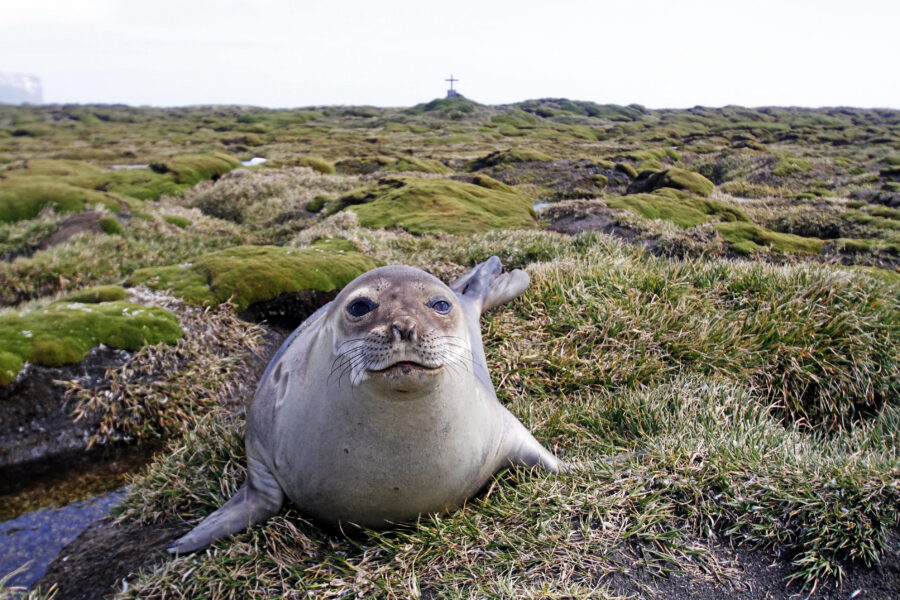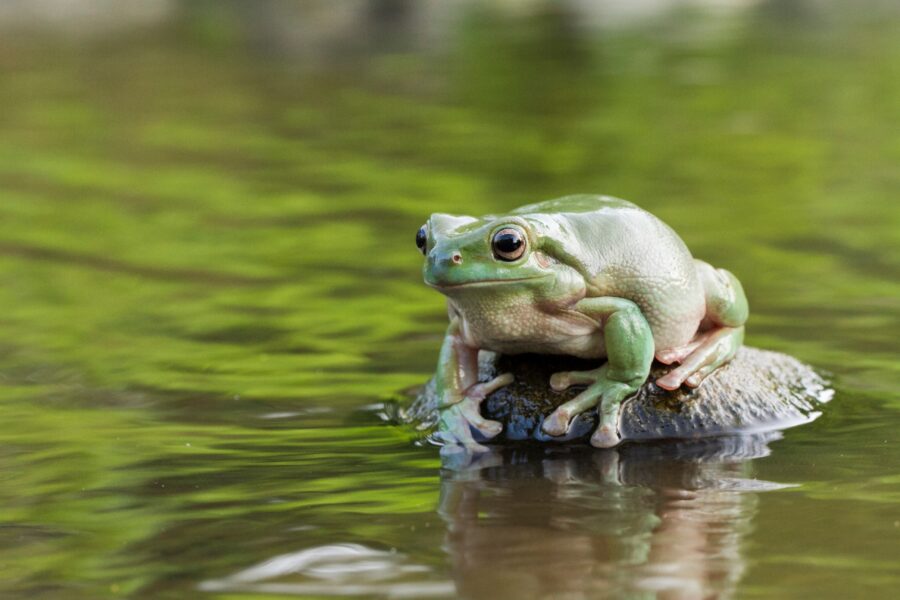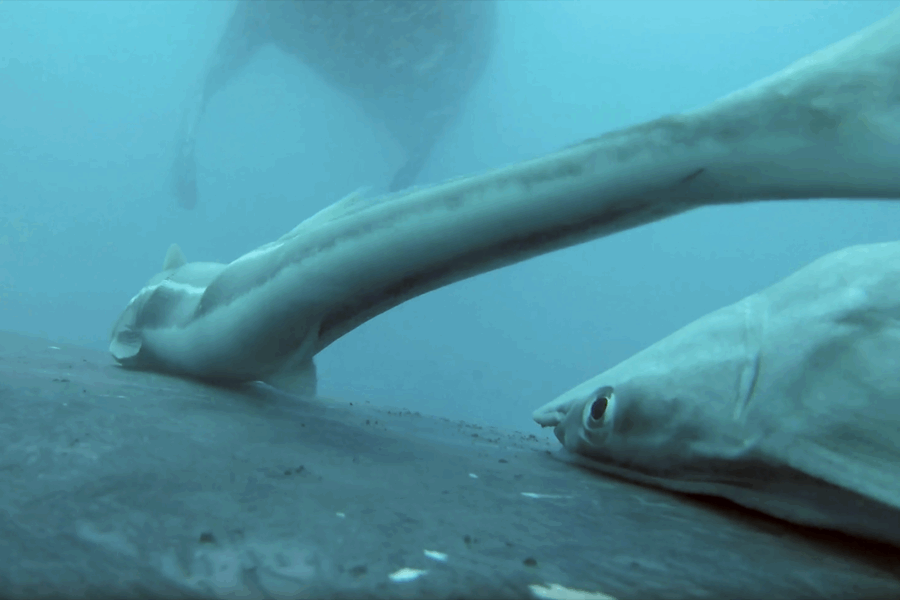Gould’s petrels back from the brink

RARELY DOES THE person who helps to list a species as endangered get to witness that population begin to recover and then see it removed from the list, all within 20 years. Yet this is exactly what conservation scientist Nicholas Carlile and his colleagues achieved with the Gould’s petrel.
This small seabird has breeding populations on a number of Pacific islands, including New Caledonia. At its lowest point during the early 1990s, the Australian population dwindled to 250 breeding pairs.
Despite the odds, these last bastions of the species met each October at a breeding location off Port Stephens, NSW, on a rugged outcrop called Cabbage Tree Island. They gathered here in two rainforested gullies to breed and produce about 50 chicks, most of which would not survive to maturity.
“In the early days, the rate of decline seemed unsustainable and all indicators pointed to the Gould’s heading the way of the dodo,” says Nicholas, a senior research scientist with the NSW Office of Environment and Heritage (OEH), based in Sydney.
Success on Montague Island
In response, conservationists sprang into action to restore the island’s natural balance. They eradicated rabbits, which improved the rainforest understorey and provided cover for the nesting birds. This also reduced their contact with the sticky seeds of the birdlime tree, which was causing death by entanglement.
Predatory Australian ravens andpied currawongs were also culled, as their numbers had been bolstered by feeding on vulnerable petrel chicks. The program was a success, and ongoing monitoring suggests there are now more than 1000 breeding pairs, producing about 450 chicks a year.
“The success we’ve had has really been a team effort, attributed to good management underlined by sound research,” Nicholas says. It was a turn of fate that saw him and coworker Dr Dave Priddel, a Senior Research Scientist with the National Parks and Wildlife Service (NPWS), arrive on Montague Island in 2012 to participate in a bird survey.
Nicholas says that the Gould’s petrel was the last species on his mind at the time. As the pair walked away from the island’s lighthouse, surrounded by the clamour of seabirds, Nicholas identified the different calls for Dave.
“My voice startled a pair of birds, which called out,” he says, and they sounded puzzlingly similar to Gould’s petrels. They searched within a clump of low-growing vegetation, where the calls appeared to be coming from, and sure enough, pulled out the first Gould’s petrel ever recorded on Montague Island. They soon found a second bird in the same thicket of native vegetation.
“All I could do was ask Dave to hold up both birds and snap a picture,” Nicholas says. He later showed the image to Dr Peter Fullagar, a retired CSIRO seabird expert, who has conducted surveys on Montague for almost 50 years, and was involved with surveys of the Gould’s petrel on Cabbage Tree Island in the ’60s and ’70s.
“He just couldn’t believe his eyes,” Nicholas says. “He was gobsmacked that I was on his patch and came up with a photo of Gould’s petrels.”
Breeding the Gould’s petrels
Later in the season, the NSW NPWS recovered a fluffy, grey chick from the nesting site and confirmed that the Gould’s had successfully bred. Further surveys during the following breeding season in 2013 confirmed a second Gould’s petrel nest, and several more chicks.
Nicholas believes the species has spread to Montague, which is 400km south, partly because of the success of the recovery and growth of the population on Cabbage Tree. “There are simply more birds sniffing around islands all over the place. We have found nesting birds on Boondelbah and Broughton islands near Port Stephens, but to think they’ve moved hundreds of kilometres south is a total surprise,” he says.
The second reason for their settling on Montague is the rehabilitation work conducted there over the past decade. A project to restore the habitat of seabirds has helped remove introduced kikuyu grass, which was smothering large expanses of breeding habitat. To combat the invasion, the NPWS has been spraying herbicide, applying the use of controlled fires and revegetating with native plants.
“This program has been pivotal in sustaining penguin and shearwater populations on the island and regaining their lost breeding habitat,” says Dr Amy Harris, shorebird recovery coordinator with the OEH. “Wedge-tail shearwaters, in particular, have bounced back. We’ve also found a new colony of white-faced storm petrels, and [the program] would have certainly contributed to the Gould’s discovery.”
Along with the vegetation management, there was an initiative to eradicate feral animals. Similar to the way in which it has improved the situation on Cabbage Tree, and many other Australian islands, this measure helped restore the natural balance.
“Goats were removed in 1989 – [they] were known to trample bird burrows and cause problems – while rabbits and mice were eradicated by 2009. The island is now free of feral animals,” Amy says.
“It is the tying together of effective island management across hundreds of kilometres that…[is evident] through this amazing example,” she adds. “You think you are just working to conserve your little part of the world and you don’t think that it’s going to have an impact more broadly.” For Nicholas, this new discovery has given him a great sense of satisfaction. “It’s why you set out to be a conservationist,” he says. “But rarely are you able to achieve it.”
- Weed control looks good for fairy penguins of Montague Island
- Green list awards world’s top conservation areas
- Seals and seabirds : Montague Island




